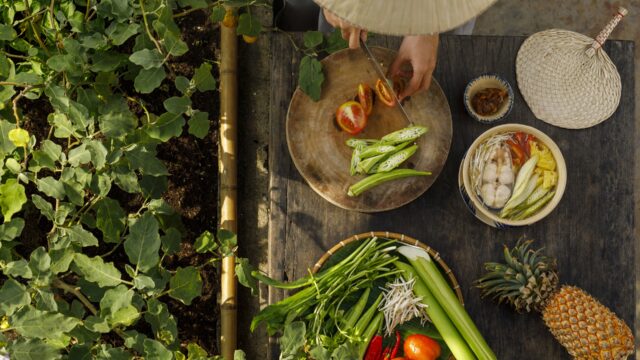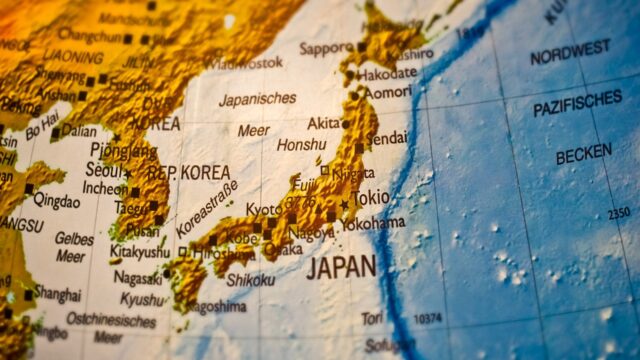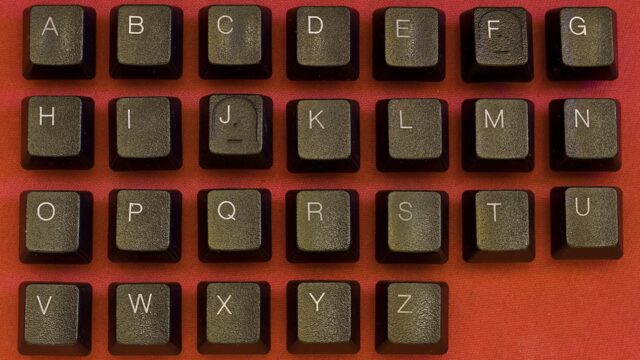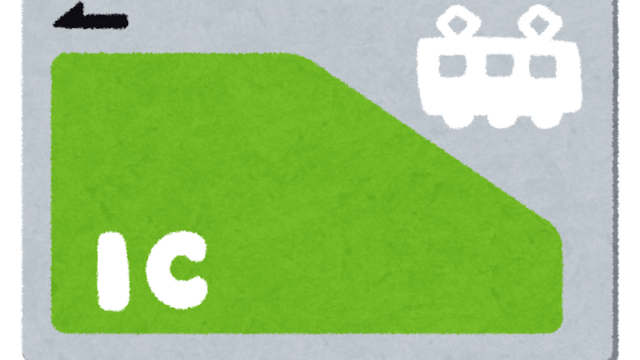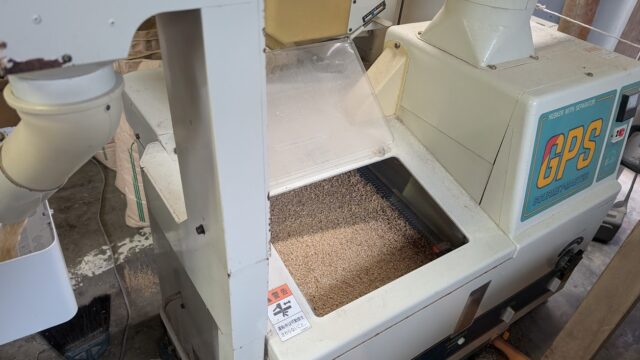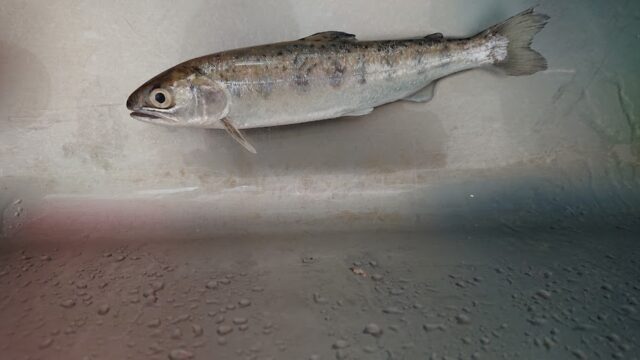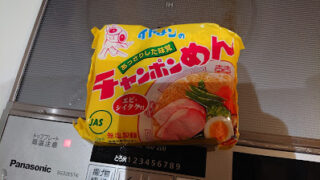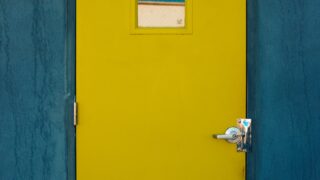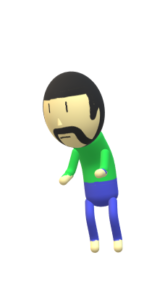マグロは日本全国どこでもだいたい同じ品質で
まずいということがない。
Tuna is of roughly the same quality all over Japan and is never bad.
迷ったときはマグロを食べる。
When in doubt, eat tuna.
昔職場の工場長から聞いた名言です。
This is a famous quote I heard from a factory manager at work a long time ago.
そんなマグロのパズルがあります。
There is such a tuna puzzle.
子供向けのパズルですが、
大人も楽しめます。
It’s a puzzle for kids, but adults can enjoy it too.
前回は牛でした。今回マグロ。
Last time it was a cow. Tuna this time.
ネタバレ注意です。
Beware of spoilers.
目次
マグロ一本解体します I will disassemble one tuna.
マグロの部位のパズルです。
This is a puzzle of tuna parts.
組み立てることにより、一本のマグロになります。
By assembling it, it becomes a single tuna.
部位は通常部位と希少部位に分かれています。
The parts are divided into regular parts and rare parts.
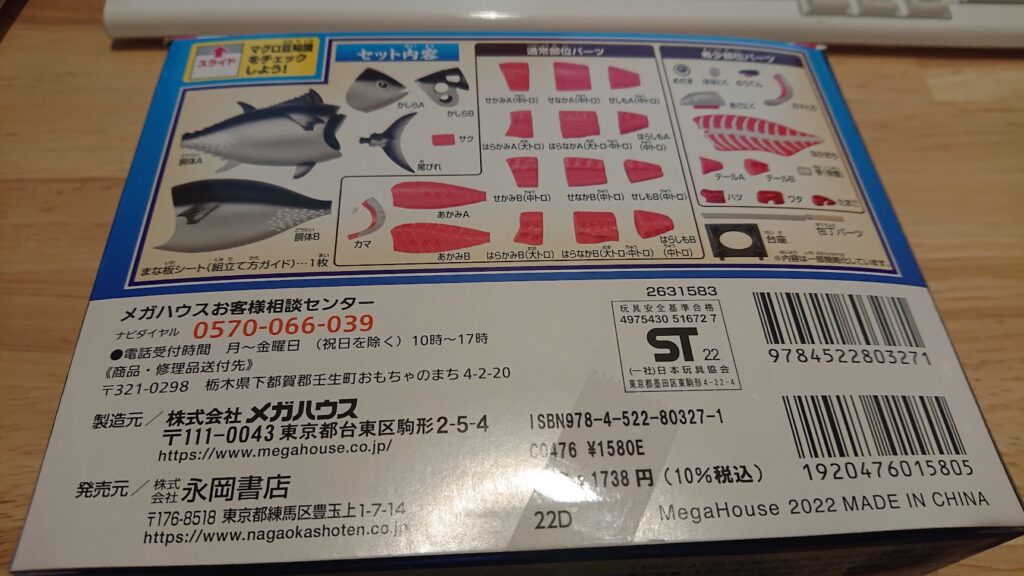
希少部位はなかなか食べれませんが、
知識だけは吸収したいと思います。
Although it is difficult to eat rare parts, I would like to absorb the knowledge.
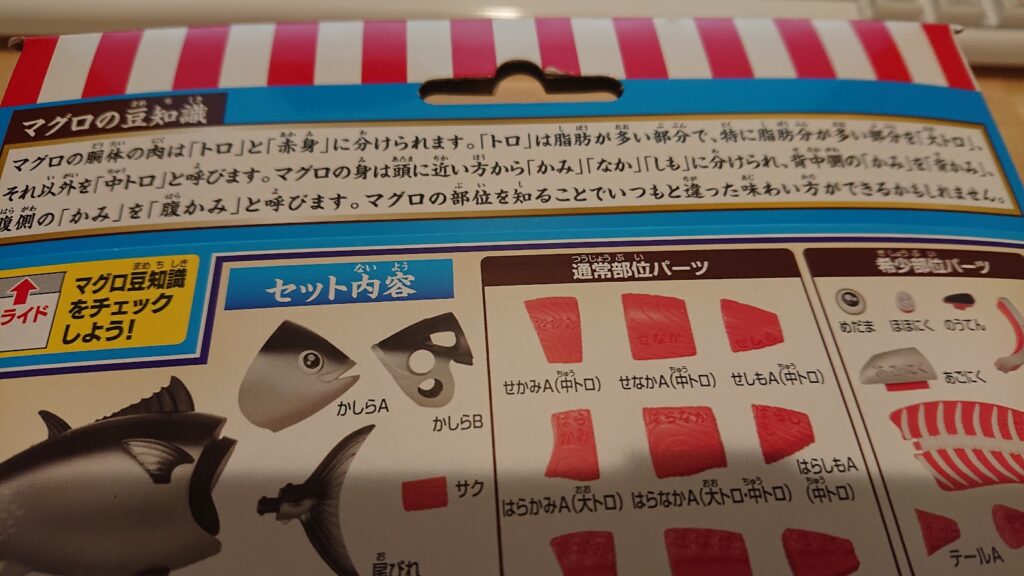
マグロの豆知識が書いてあります。
It contains trivia about tuna.
トロのうち脂肪分が多い部分は大トロといい、
それ以外を中トロと呼ぶそうです。
The fatty part of fatty tuna is called otoro, and the rest is called medium fatty tuna.
それでは回転ずしの普通のトロは何トロなのでしょうか?
So, how many tuna is a normal conveyor belt sushi?
改めてメニューを見てみるとトロってどこもありません。
When I looked at the menu again, I couldn’t find Toro anywhere.
中トロか大トロ、ビントロ、トロタク等ありますが、
トロ単体ではありませんでした。
There are Chutoro, Otoro, Bintoro, Torotaku, etc., but it was not Toro alone.
思わぬ発見でした。ひとつ賢くなりました。
It was an unexpected discovery. I have become wiser.
中身開封 Opening the contents
中身は6つに分かれています。
The contents are divided into 6 parts.
まな板シート
cutting board sheet
裏には組み立て手順書いてあります。
Assembly instructions are written on the back.
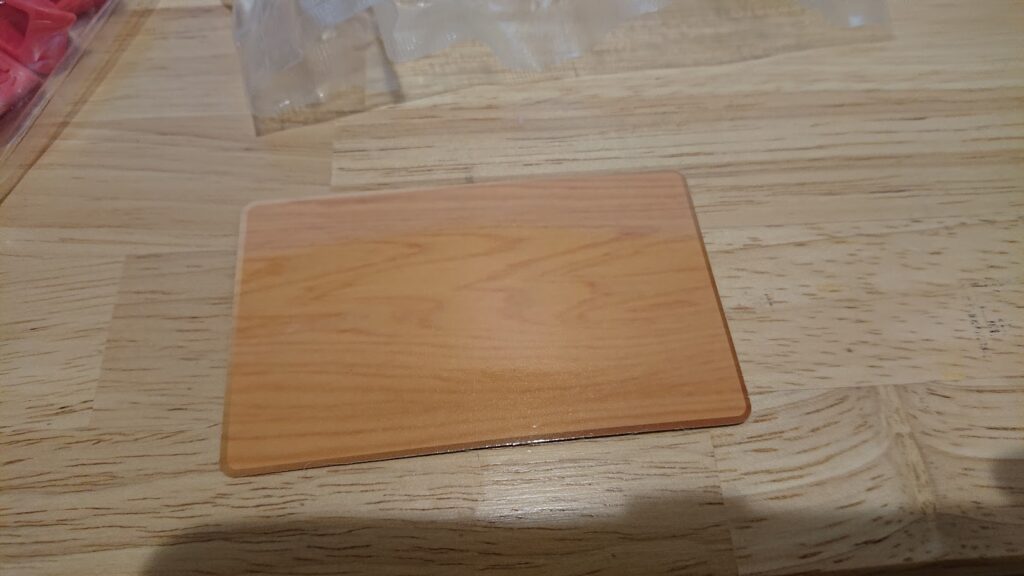
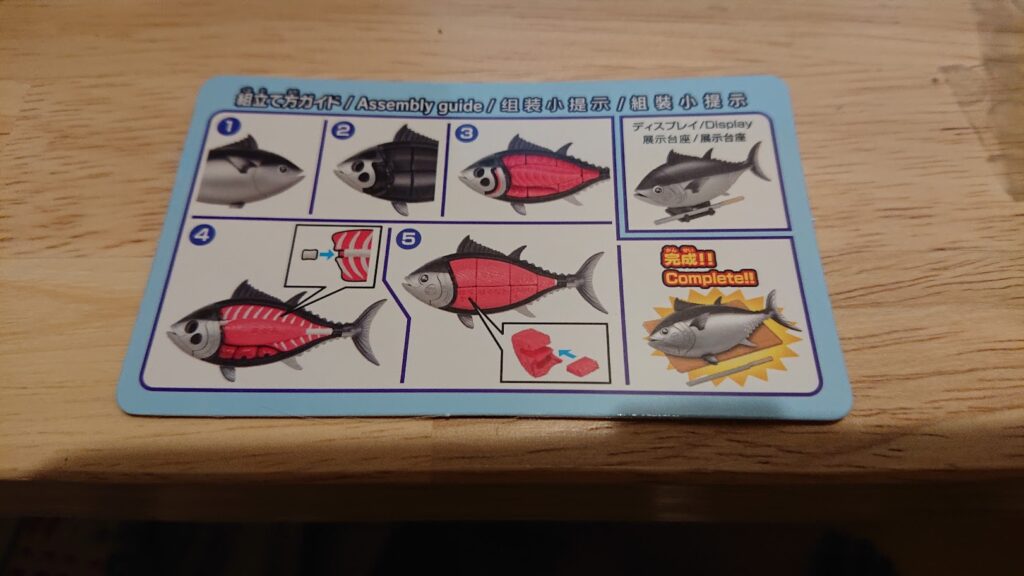
通常部位が2つ
Two normal parts
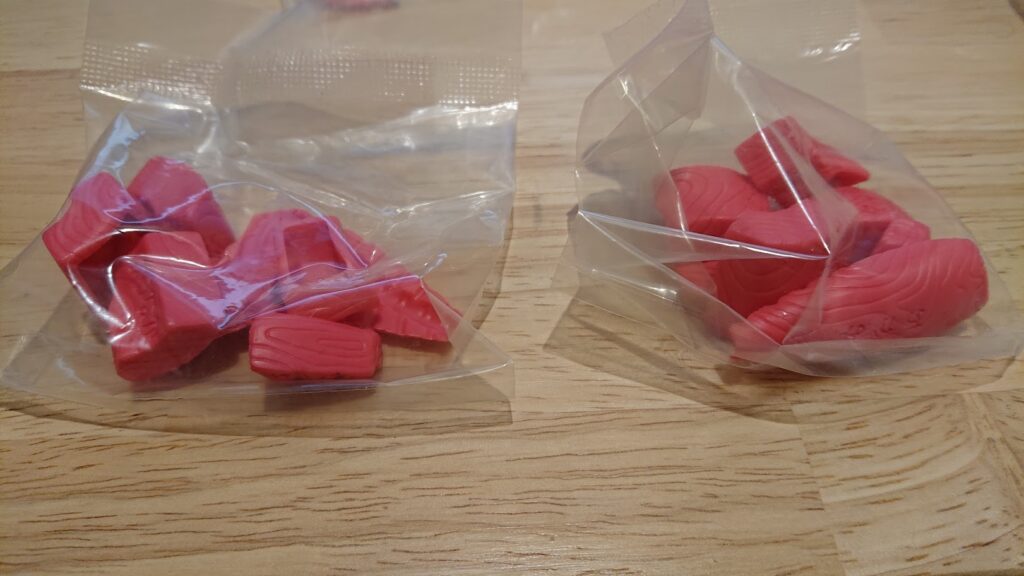
希少部位と台座が2つ
2 rare parts and pedestal
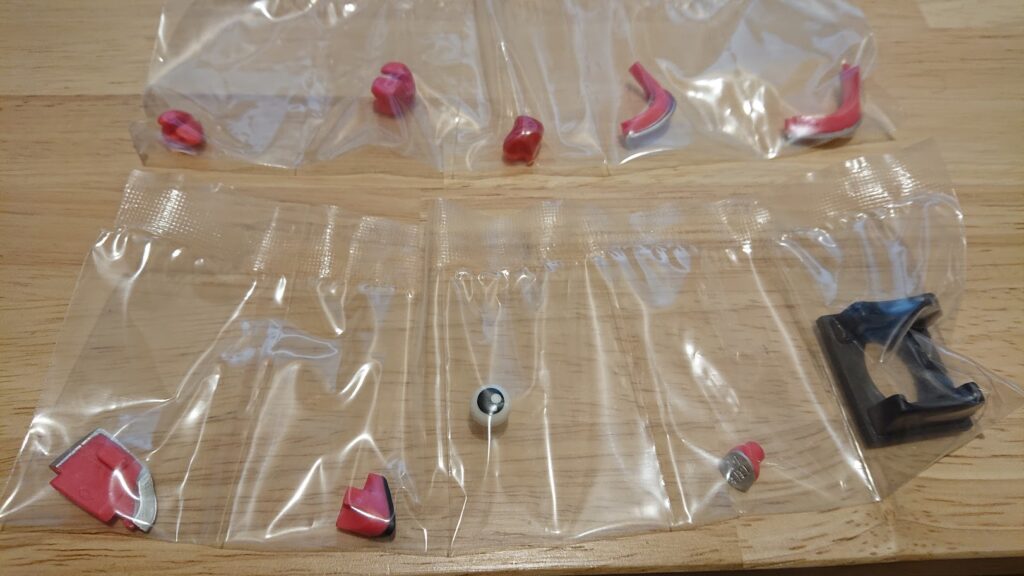
胴体と骨
torso and bones
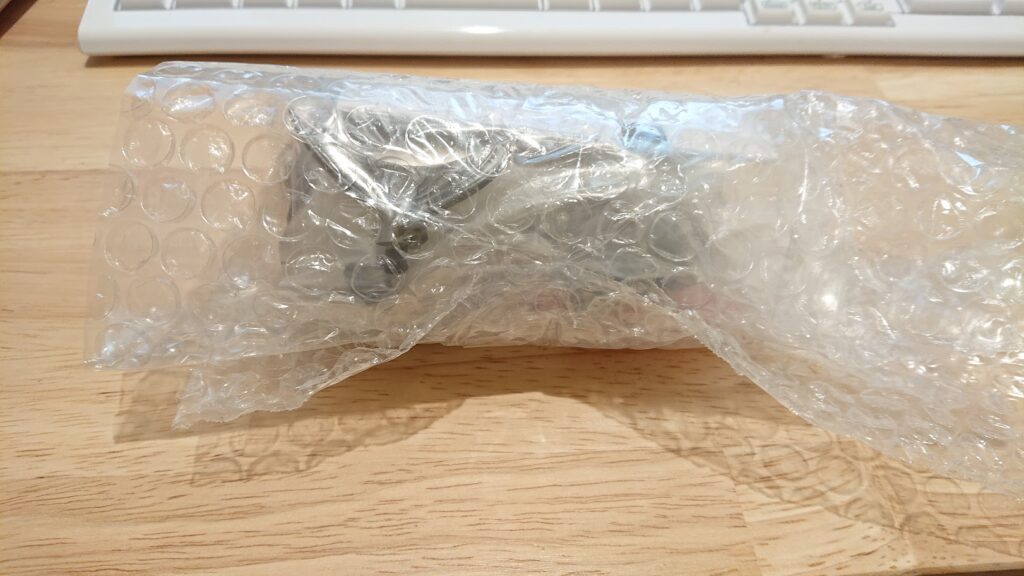
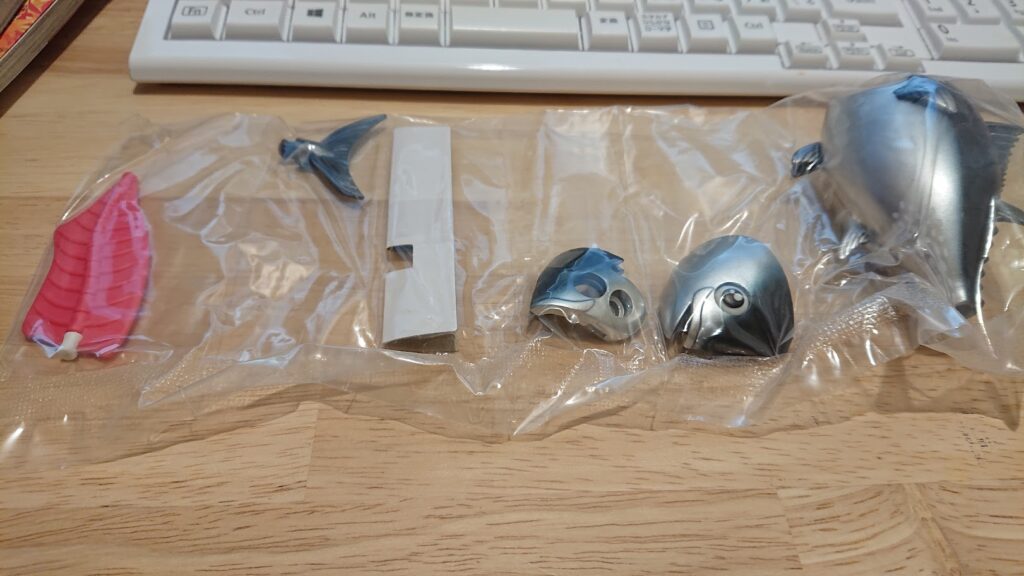
牛の時と違い全部バラバラの状態からのスタートです。
Unlike with the cows, we started from a completely disjointed state.
パズル感があります。
It has a puzzle feel.
組み立てていきます。
Let’s assemble it.
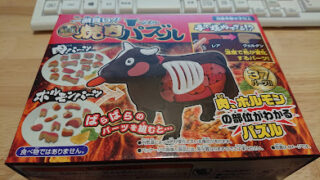
組み立てていきます Let’s assemble
胴体組み立て fuselage assembly
部品は全部で6個あります。
There are 6 parts in total.
胴体、顔が2つ、尻尾、骨、包丁です。
It has a body, two faces, a tail, bones, and a knife.
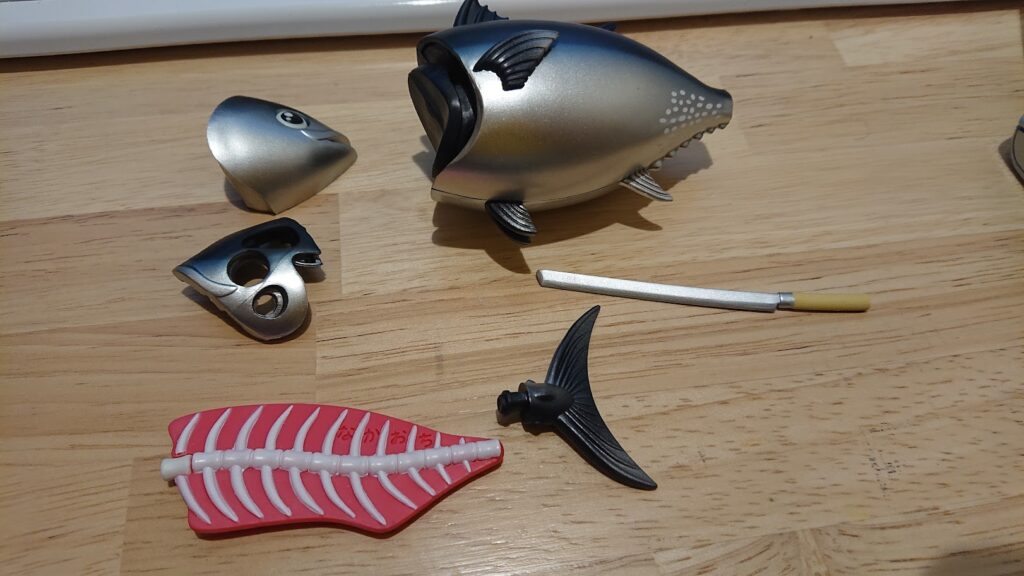
胴体は2分割にできます。
The body can be divided into two parts.
この中に部位を組み立てていきます。
We will assemble the parts inside this.
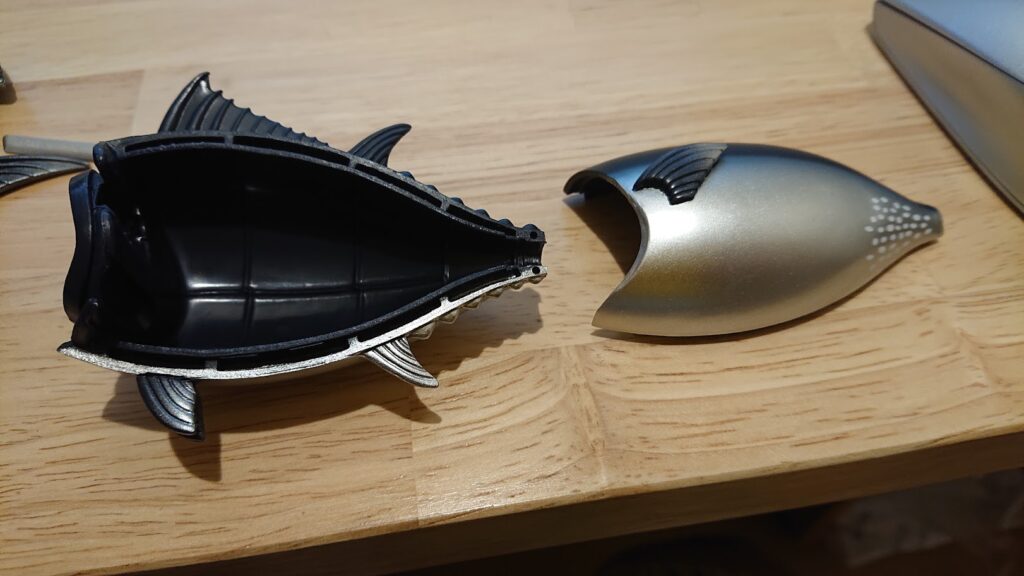
顔パーツを胴体に取り付けます。
Attach the face parts to the body.
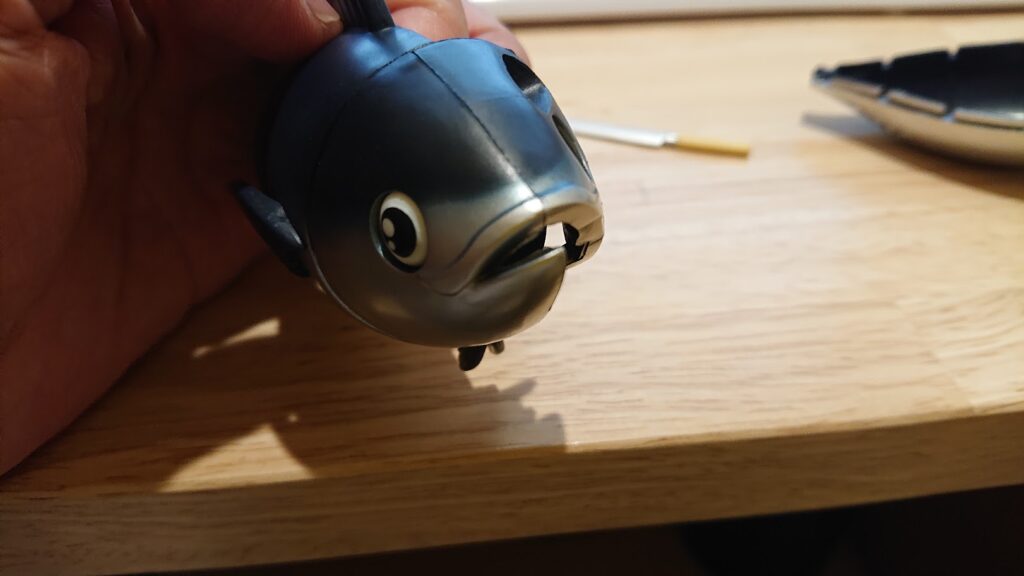
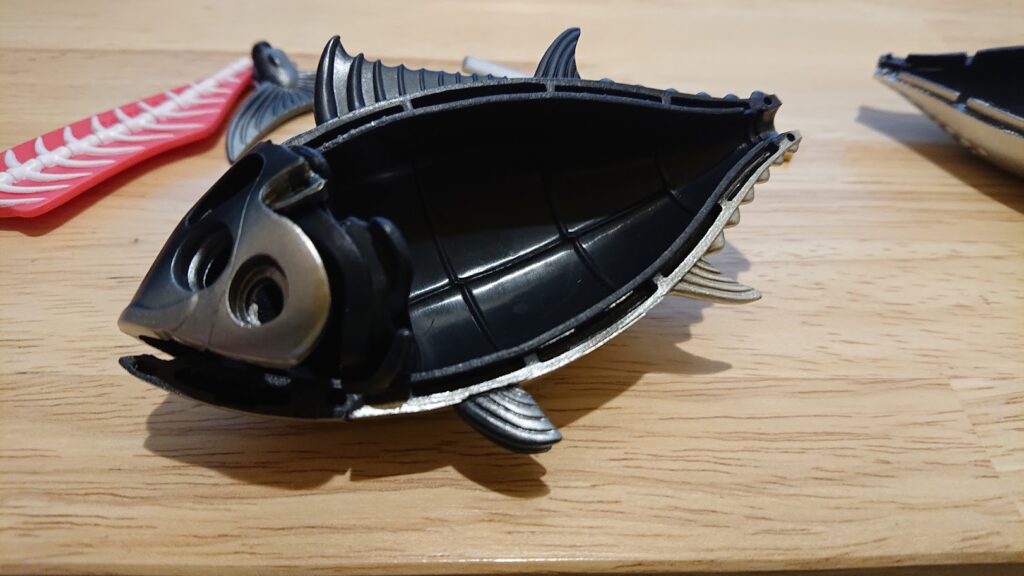
部位一つ目組み立て Assemble the first part
2つの袋のうち、部位の内側に名前が書いてある袋を先に開けます。
Of the two bags, open the one with the name written inside the part first.
中身は部品は全部で8個あります。
There are a total of 8 parts inside.
はらかみ、はらなか、はらしも、せかみ、せなか、せしも、テール、あかみです。
Harakami, Haranaka, Harashimo, Sekami, Senaka, Seshimo, Tail, Akami.
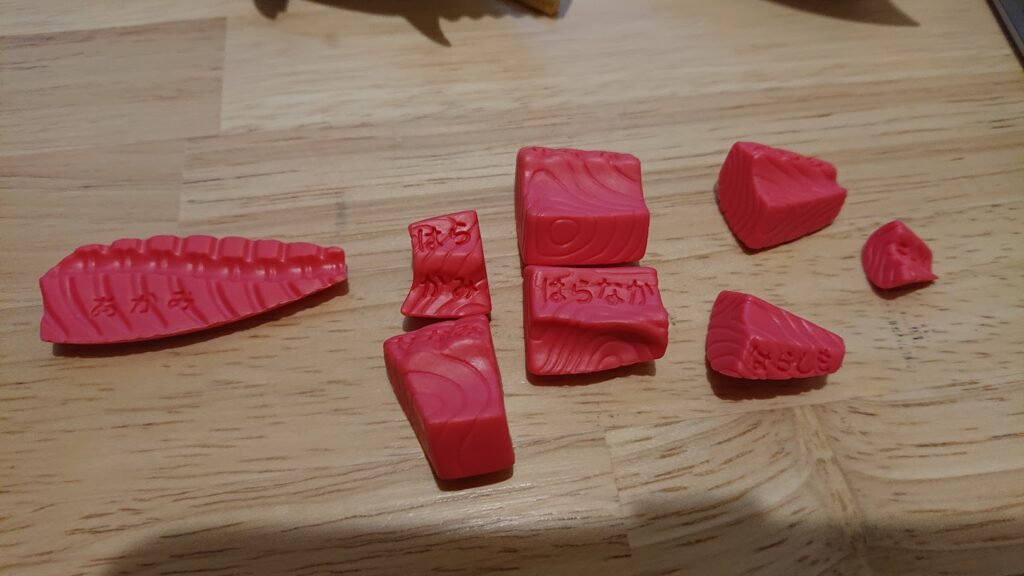
組み立てます。
Assemble.
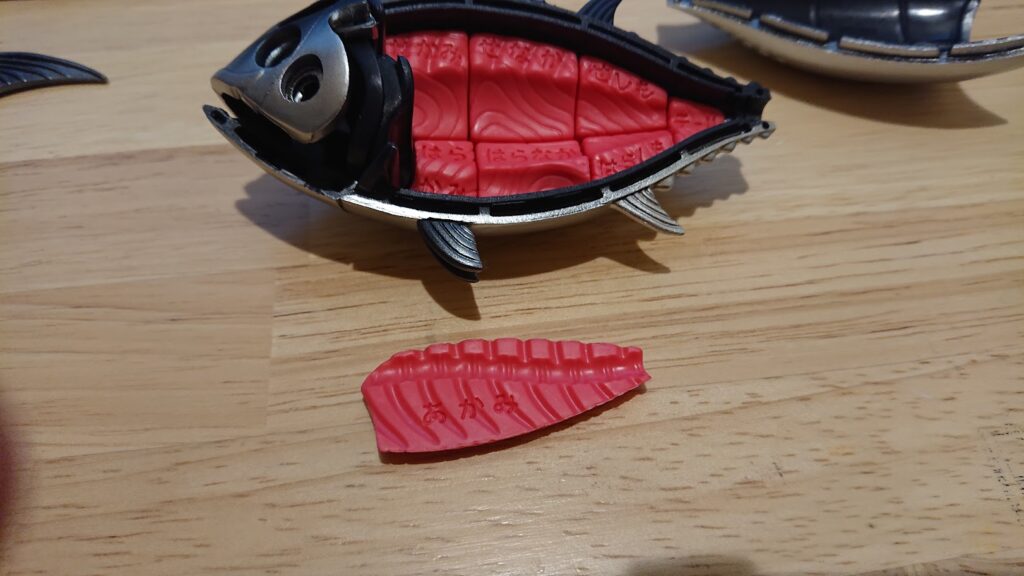
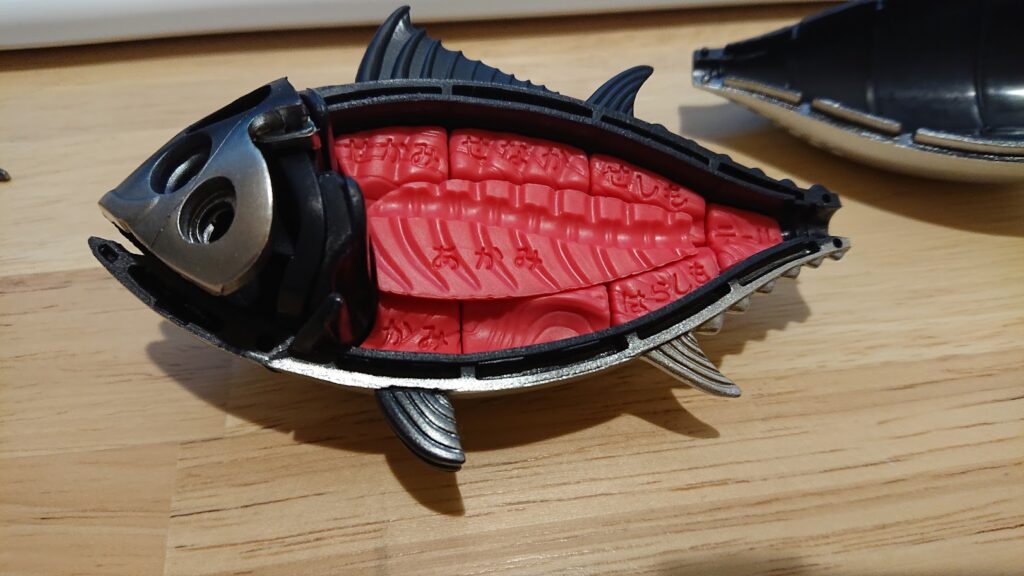
骨をいれます。
I’ll put in the bones.
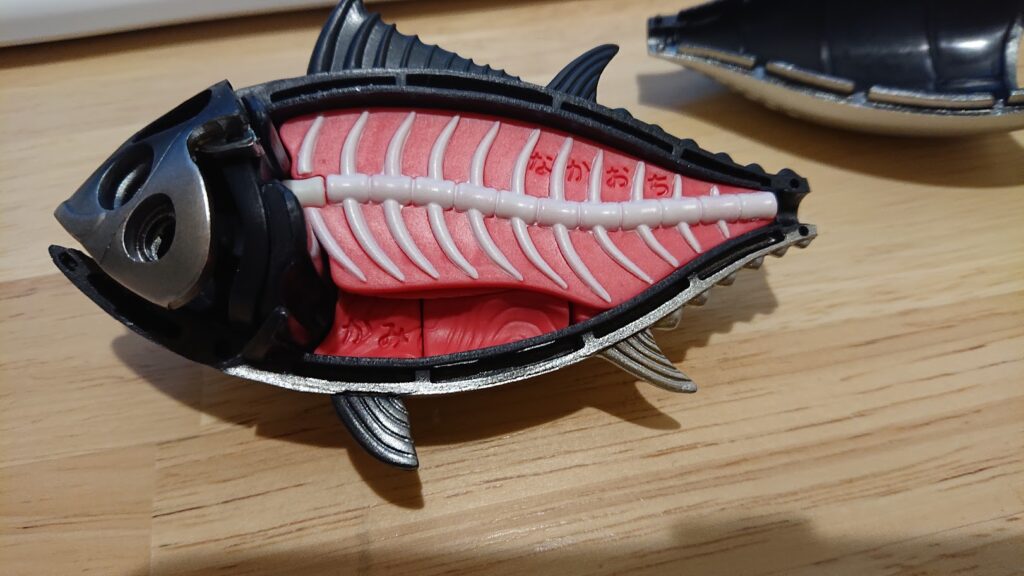
希少部位の内臓を組み立てます Assemble rare internal organs
希少部位のハツ、ワタ、たまごを袋から出します。
Remove the rare parts of the heart, gut, and egg from the bag.
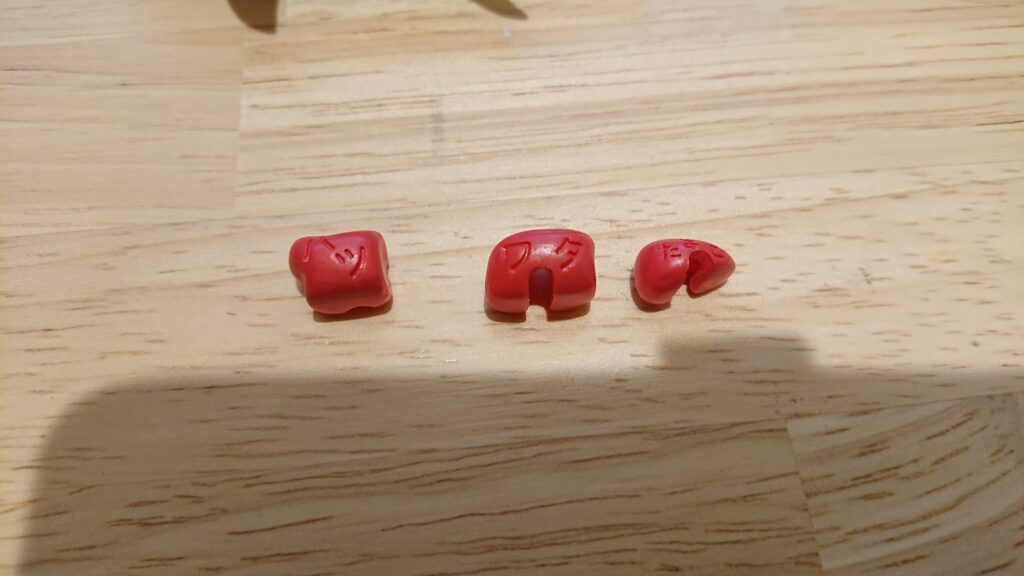
そして組み立て。
And assemble.
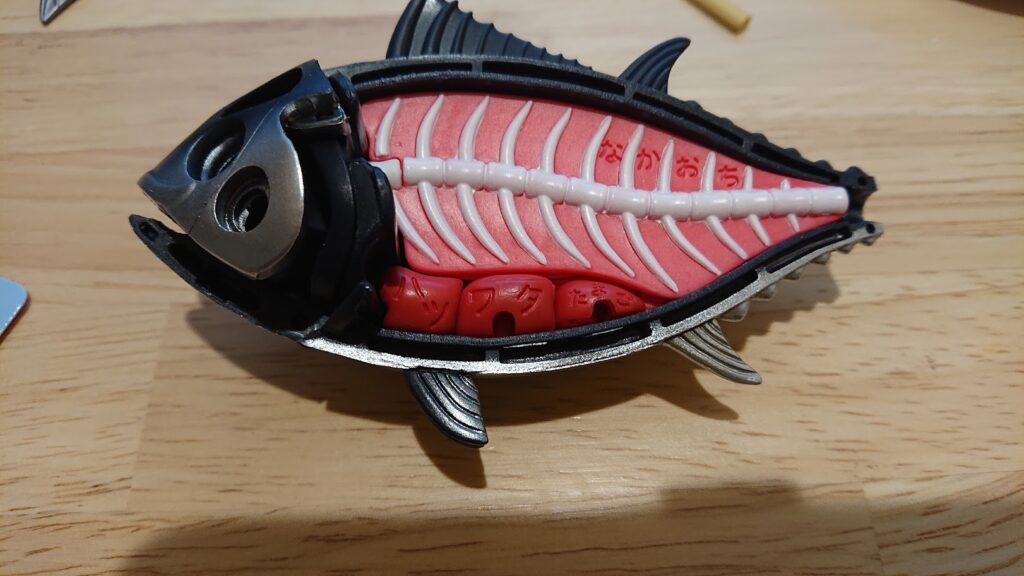
通常部位2つめ組み立て Assembling the second normal part
先ほどと同様で中身は部品は全部で8個あります。
As before, there are a total of 8 parts inside.
はらかみ、はらなか、はらしも、せかみ、せなか、せしも、テール、あかみです。
Harakami, Haranaka, Harashimo, Sekami, Senaka, Seshimo, Tail, Akami.
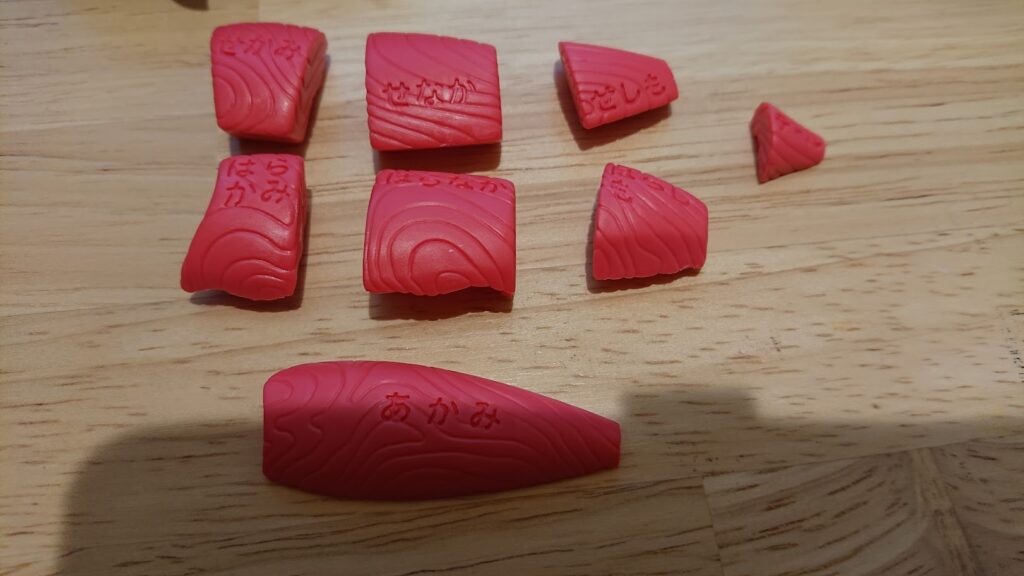
組み立てます。
Assemble.
赤みを最初に入れるのがポイントです。
The key is to put akami in first.
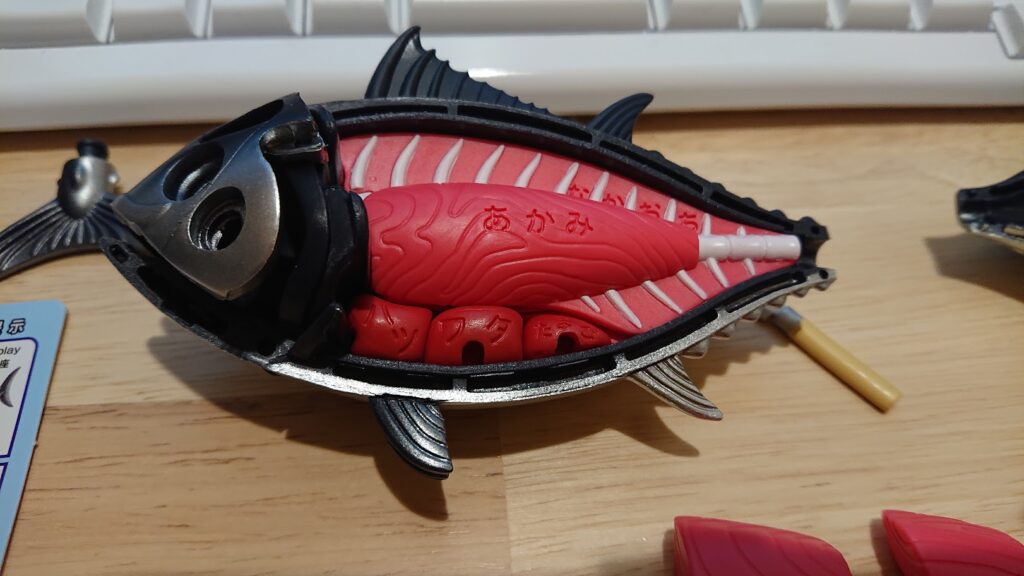
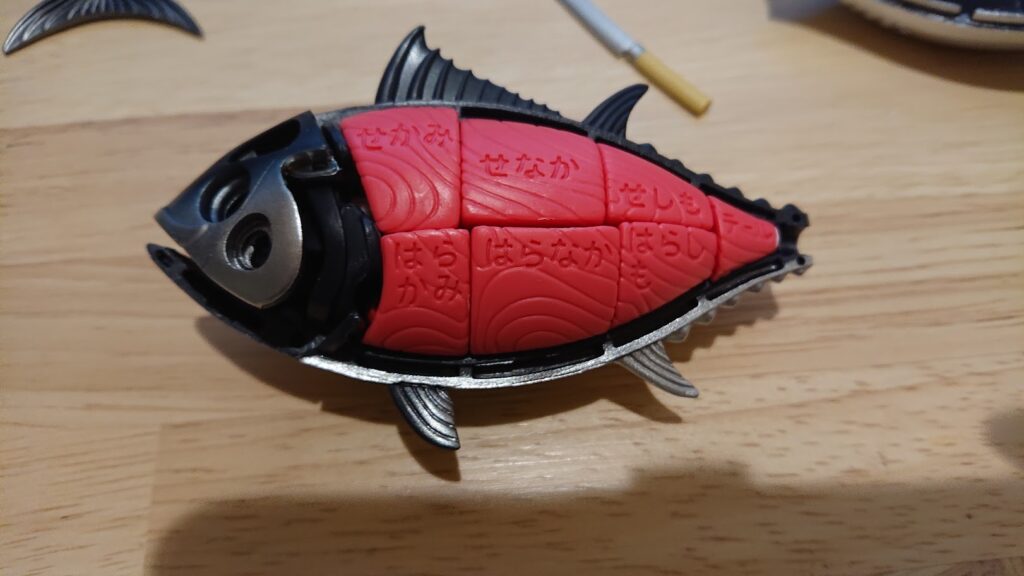
顔、希少部位顔組み立て Face, rare parts face assembly
顔と残りの希少部位は7個です。
There are 7 pieces for the face and the rest of the rare parts.
カマ、カマとろ、あごにく、のうてん、ほほにく、めだまです。
Kama, kama toro, agoniku, noten, cheek, and eyes.
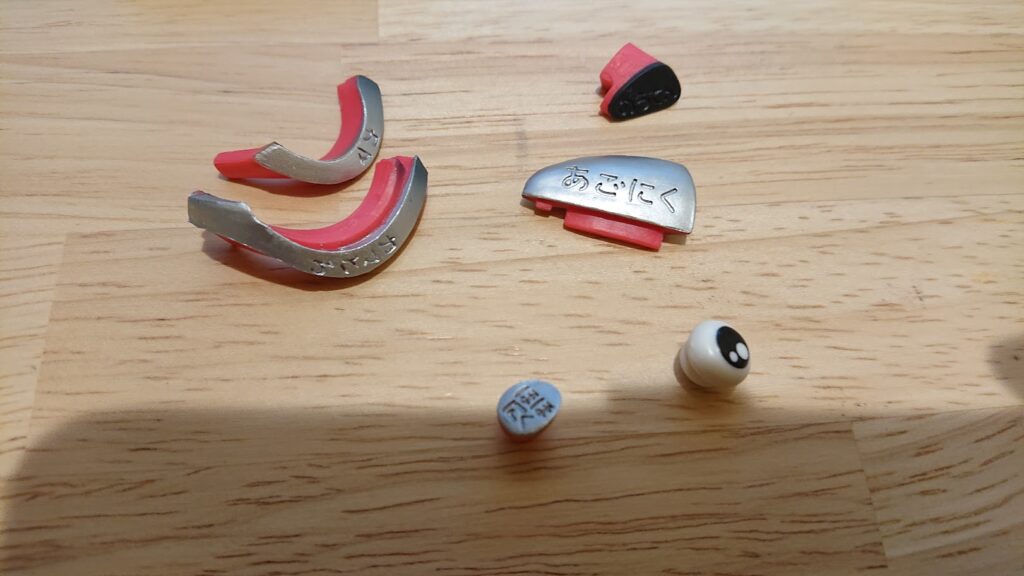
尻尾も付けます。
Also add a tail.
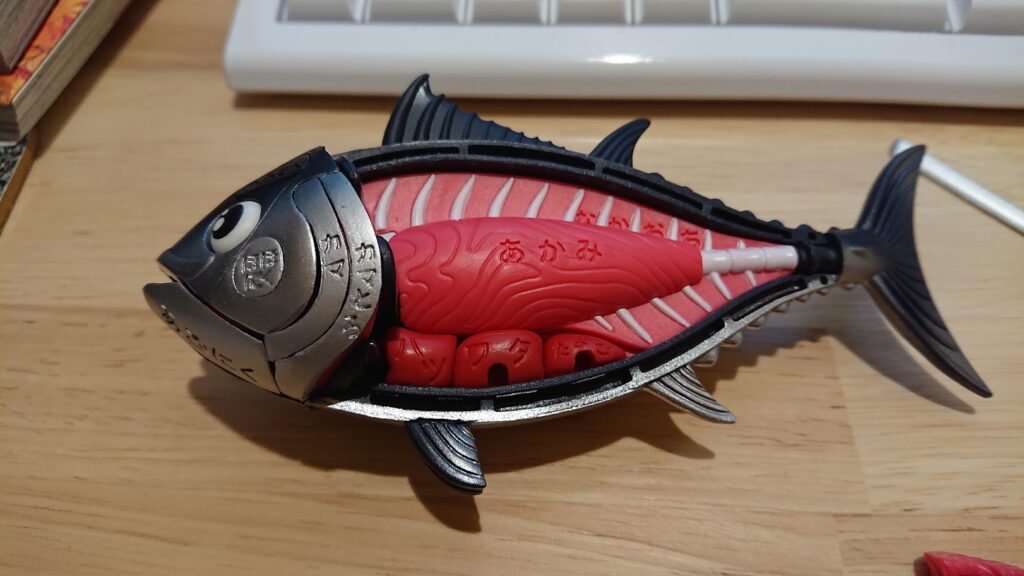
部位はつけている最中にばらけたのでもう一度組み立てます。
The parts came apart while I was attaching them, so I had to put them together again.
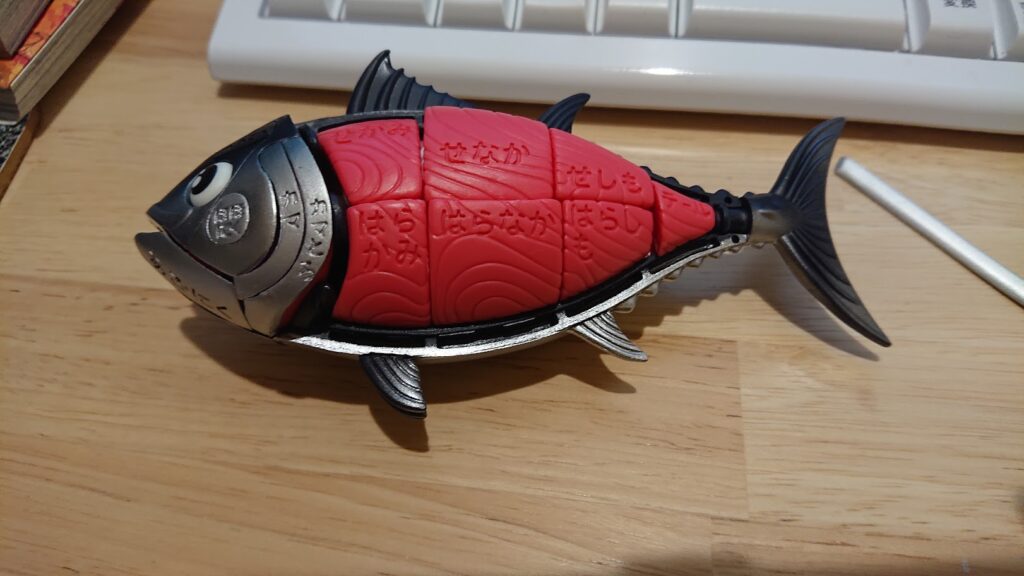
最後の胴体をつけて
台座と包丁を飾ったら完成です。
Attach the final body, decorate the pedestal and knife, and it’s complete.
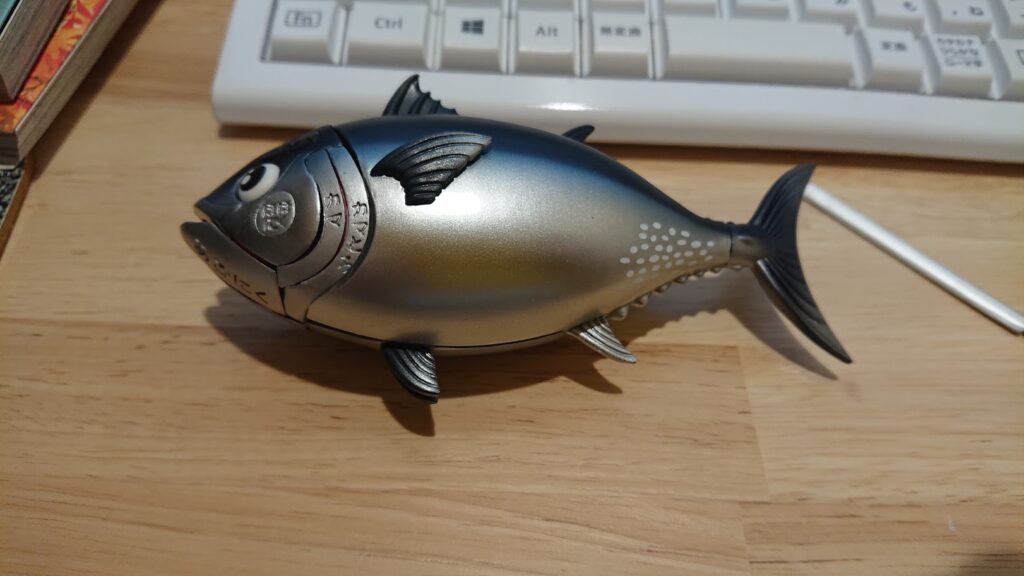
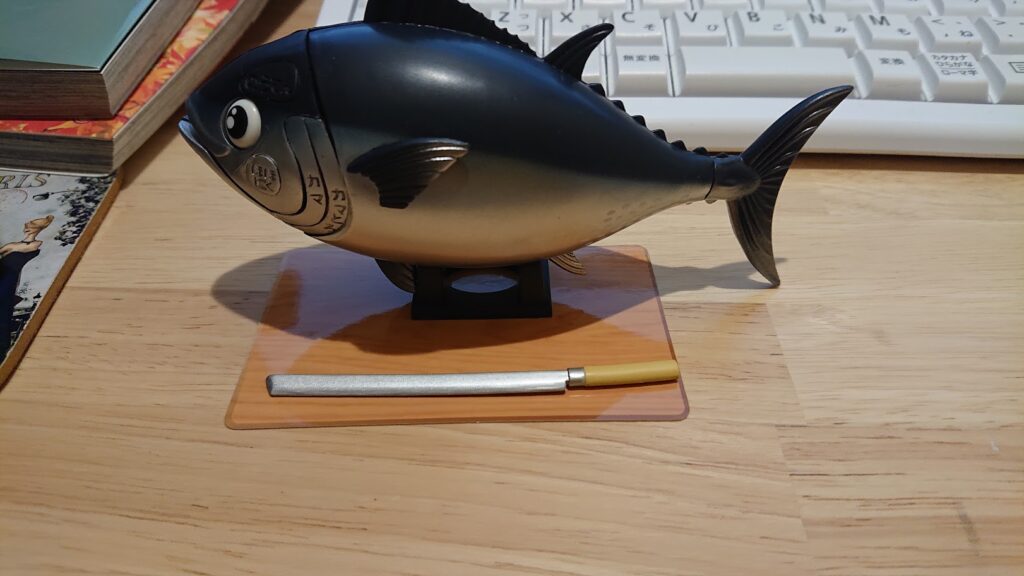

感想 thoughts
牛のパズルに比べると、簡単です。
It’s easier than the cow puzzle.
対象年齢6歳とありますが、
もう少し小さい子でも楽しめると思いました。
Although the target age is 6 years old, I thought that even younger children would enjoy it.
今回のものは中身がむき出しでないので
普通にオブジェとして飾れます。
The contents of this item are not exposed, so it can be displayed as an art object.
台座と包丁もいい味だしてます。
The pedestal and knife also have a nice taste.
関連記事↓


Memo: Tuna farming
Fish consumption is increasing worldwide, and there are concerns that marine resources will be depleted in the future.
In response to concerns about the depletion of marine resources, fishing regulations are being negotiated around the world.
Currently, fish farming is actively carried out, and there are various types such as salmon, sea bream, and yellowtail.
This time we focused on tuna, so I looked into tuna farming.
Japanese tuna farming
Japan’s tuna consumption is the highest in the world.
Therefore, farming and consuming tuna is a proposition.
According to data from the Fisheries Agency, the number of farmed bluefin tuna shipped appears to be increasing year by year.
Since we are dealing with living things, there are fluctuations, but the trend is that the number of farmed tuna shipped is increasing.
It’s a great initiative, and the results are amazing.
There are two types of aquaculture: natural seedlings and artificial seedlings.
Natural seedlings are a method of collecting and growing young fish.
Artificial seedlings are also raised from aquaculture. This is what is called complete aquaculture.
In terms of percentage, natural seedlings are overwhelmingly more numerous.
I think it means that artificial seedlings are difficult.
If the ratios become close to the same or the same, the times will change dramatically.
I think this is wonderful work and research that supports Japan’s food culture.
Furthermore, I believe that we can become someone who can help save food around the world.
I would like to ask the producers and engineers to do their best.
Good luck, Japan!

